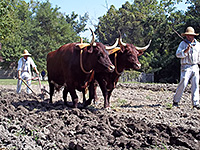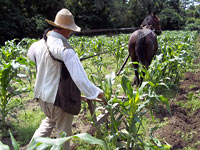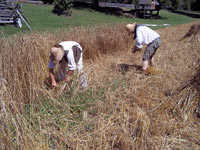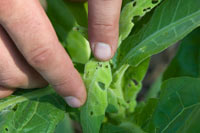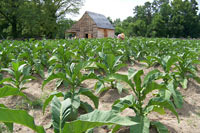Page content
Historic Farming
Farming encompasses the life skills of most colonial Virginians
Farmers worked the land and generally grew cash crops of tobacco and wheat, as well as a variety of other food and fiber crops like corn, oats, cotton, flax, and hemp. They raised livestock, including beef, dairy and oxen cattle, horses, hogs, sheep, and poultry.
Today, Colonial Williamsburg’s Historic Farmers do the work of middling farmers using 18th-century methods at Great Hopes Plantation. Here they work heirloom-variety crops of corn, tobacco, wheat, and fiber crops. Powerful oxen haul manure and pull plows through the fields, while work horses cultivate the weeds from between the plants. Historic farmers also tend poultry and hogs—some of which are a part of Colonial Williamsburg’s Rare Breeds program.
The following essays offer overviews of 18th-century farming at Great Hopes Plantation, a living history site at the edge of Colonial Williamsburg’s historic area. These topic introductions will help those interested in digging a little deeper into the agricultural world of early Virginians.
- Tobacco
- Corn
- Wheat
- Cotton
- Other Crops
- Livestock
- Seasonality
- Primary Agricultural Implements
- Agriculture and the War
For further reading:
Interested in related farming books?
Download our recommended reading list


